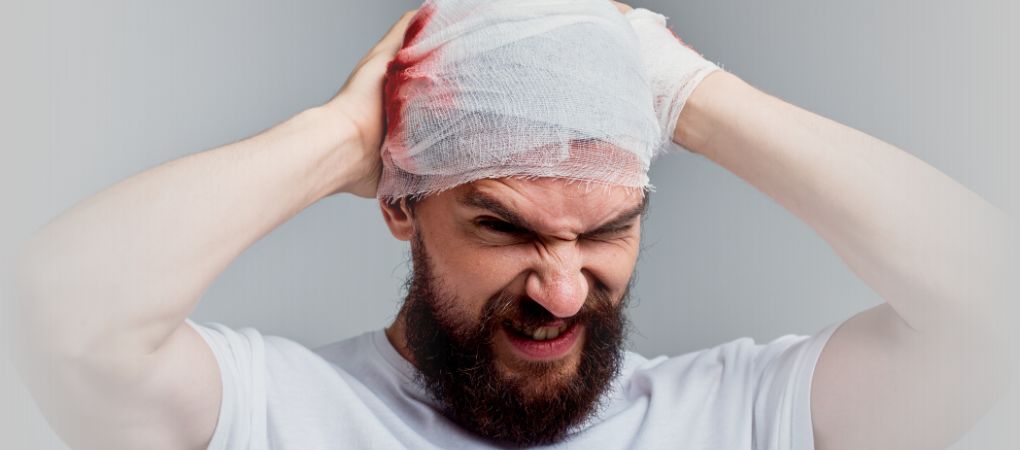Francesca Galiano
|
03/01/2024 - Last update 03/01/2024
David T. Guernsey 3rd, Adena Leder, Sheldon Yao | Year 2016
Resolution of Concussion Symptoms After Osteopathic Manipulative Treatment: A Case Report
Pathology:
Concussion
Type of study:
Case Report
Date of publication of the study’:
2016/Mar/01

Purpose of the study
- Objective: to show the usefulness of OMT in the management of symptoms following concussion.
- Measured outcomes: assessment of symptoms by Sensory Organization Test (SOT) and SMART Balance Master.
Participants
- Number: 1
- Description: a 27-year-old man. Two days of dizziness, nausea, mental fog, and a blowing sensation in his ear; most of these symptoms had began 3 days after a fall from a snowboard without a helmet in which he hit the left side of the back of his head. There was no loss of consciousness or memory immediately after the fall, nor vomiting or visual problems, but headache, nausea, dizziness (“the room was spinning” he said) and tinnitus.
The medical history did not show any health problems or familiarity with headache, attention problems, anxiety or depression. No medication was taken after the fall. At the visit, his vital signs were normal, and so were the results of the physical, cardiopulmonary, neurological, and ocular examinations. Neither cerebellar signs nor sensory or walking deficits were detected.
The osteopathic structural examination showed a right sphenobasilar synchondrosis torsion, an externally rotated left temporal bone, somatic dysfunctions at C3-C5, T2-T3, L4, left unilateral sacral flexion, and right first rib inhalation dysfunction.
This evaluation, in conjunction with the use of the SOT test on the SMART Balance Master – carried out on grounds of the patient’s balance complaints – led to the diagnosis of mild concussion.
Interventions and evaluations
- Assessment of balance-related symptoms according to proprioception, vision, and vestibular analysis using SOT and SMART Balance Master.
- Single OMT session of 25 minutes.
- Techniques used: balanced membranous tension, cranial bone lifts, venous sinus drainage, balanced ligamentous tension of the thoracic outlet, muscle energy and myofascial release to the cervical and thoracic spine, and high-velocity, low-amplitude to the cervical, thoracic, lumbar, and sacral spine segments.
Results
Immediately after treatment, the patient felt a resolution of dizziness, tinnitus, and nausea. The “room spinning” sensation also disappeared. The composite equilibrium as well as the balance in response to particular visual and vestibular stimuli had improved.
At follow-up one week after the visit, the symptoms had not recurred.
Discussion
Symptoms following a concussion may result from inflammatory factors and free radicals that can pass from damaged tissues to cerebral lymphatic vessels. OMT could act on these symptoms by increasing glymphatic drainage of these substances. In fact, some studies have shown that cranial manipulation can act on the autonomic nervous system and on the Traube-Hering-Mayer oscillation, thus modifying cerebrospinal flow. Whereas, animal studies have shown that OMT applied to other parts of the body can improve lymphatic flow. Consequently, the action of OMT on the glymphatic system in case of concussion is a realistic hypothesis, although it needs to be investigated further, of course.
It is possible that OMT could also induce the same positive effects as other techniques acting on proprioception – high-speed low-amplitude and myofascial release – activating the mechanoreceptors located at the cervical level, and through other actions.
However, this study has some important limitations; in fact, assessment tools such as Immediate Post-Concussion Assessment and Cognitive Testing (ImPACT) or SCAT-3 were not used. SOT on SMART Balance Master needs more studies to be validated as a useful test for understanding the effectiveness of OMT. In addition, the study lacks medium- and long-term follow-up.
However, given the complexity of the pathophysiology of concussion, it is important that future studies evaluate the effect of OMT on various organ processes, just as it is important to begin collecting a series of case and pilot studies on the effects of OMT. Indeed, only in this way can we effectively understand whether OMT is a useful option for concussion management.
The review of Osteopedia
By Marco Chiera
Strengths: all techniques used are mentioned; good description of the limitations of the study; useful analysis of the necessary next steps to take in order to improve the state of research on OMT and concussion.
Limits: like all case reports, itis difficult to generalize it; the authors have already pointed out the various limitations.

Are you an osteopath?
Register and enjoy the membership benefits. Create your public profile and publish your studies. It's free!
Register now
School or training institution?
Register and enjoy the membership benefits. Create your public profile and publish your studies. It's free!
Register now
Do you want to become an osteopath? Are you a student?
Register and enjoy the membership benefits. Create your public profile and publish your studies. It's free!
Register now







